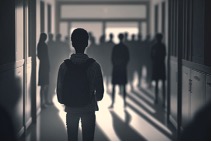
EDUCATIONAL RESOURCES
Welcome, educators! Our education page offers a rich array of resources tailored for teachers. Explore materials designed to inspire and equip you in guiding students through the principles of nonviolence, fostering deeper insights into peace-building strategies, and facilitating transformative learning experiences for a more harmonious and inclusive global community.
Early Childhood
|
Discover ‘Life’s Little Lessons,’ a set of engaging resources perfect for early childhood care providers, aligning with the spirit of A Season for Nonviolence. Drawing from the beloved PBS KIDS series, DANIEL TIGER’S NEIGHBORHOOD, this digital resource incorporates Fred Rogers’ renowned social-emotional learning curriculum. Through catchy ‘strategy songs’ and Daniel Tiger’s adventures, young children learn valuable social and emotional skills, managing emotions and nurturing growth while exploring, singing, and creating in a supportive environment that echoes the principles of nonviolence and empathy. |
|
Grades K-2
|
During a Season For Nonviolence, you can help young students build healthy social and emotional skills with this special collection on promoting kindness, being just, and creating a caring classroom community! These activities, videos, tips, articles, and guides offer thoughtful ways to demonstrate and encourage kind and fair behavior in your classroom that can translate to student’s behavior and everyday actions. |
|
Grades 3-5
|
We need strong champions of nonviolence. You can help your students think critically about the dynamic and changing nature of what it means to be a leader. Below you’ll find resources that will assist and encourage your students to explore their value systems, promote positive leadership discussions around school, and embolden your students to think beyond the traditional notions of leadership. |
|
Grades 6-8
|
In the second half of the 20th century, racial tensions rose in the United States as African Americans began to challenge unjust laws that supported discrimination and segregation. This movement found its leader in the patient and inspiring minister, Dr. Martin Luther King, Jr. Students will watch a short video and engage in two primary source activities in order to explore how King’s deep-seated commitment to nonviolence contributed to the expansion of social justice in the United States, particularly for African Americans. |
|
|
|
During A Season of Nonviolence, explore the dedicated Martin Luther King, Jr. pages offering an array of impactful lessons and resources to honor this influential figure. Dive into a comprehensive thematic unit encompassing a curated collection of lessons, engaging activities, and online resources designed to commemorate and reflect upon the legacy of MLK, Jr., fostering deeper understanding and meaningful engagement with his ideals.
|
|
Grades 9-12
|
During a Season for Nonviolence, teachers can access an invaluable educational resource centered on Mahatma Gandhi and his enduring legacy in Indian and world history. This comprehensive tool empowers educators to delve into various facets, including exploring the geography and history of India, analyzing Gandhi’s profound use of nonviolent methods in the struggle for independence and against injustice and hatred, comparing his approaches to others’, examining the historical parallels between Gandhi and the early U.S. civil rights movement, and critically evaluating interreligious conflict and violence. This resource serves as a pivotal guide, fostering a deeper understanding of nonviolence and promoting meaningful discussions on peace-building in the classroom. |
|
|
|
In this lesson, students explore how respect, trust, and love can transform youth violence. Through classroom discussion, students examine reasons why young people join gangs and ways those instincts can become the foundation for creative participation in society. Reflective writing prompts are also included for students to demonstrate their understanding of the story. |
|
|
|
This lesson explores the complexities of a situation in which immigrant students attend a school that is plagued with racially motivated violence. Working in small groups and as a class, students will discuss possible solutions and outcomes and apply their problem-solving skills to issues affecting their own school and community. |
|












